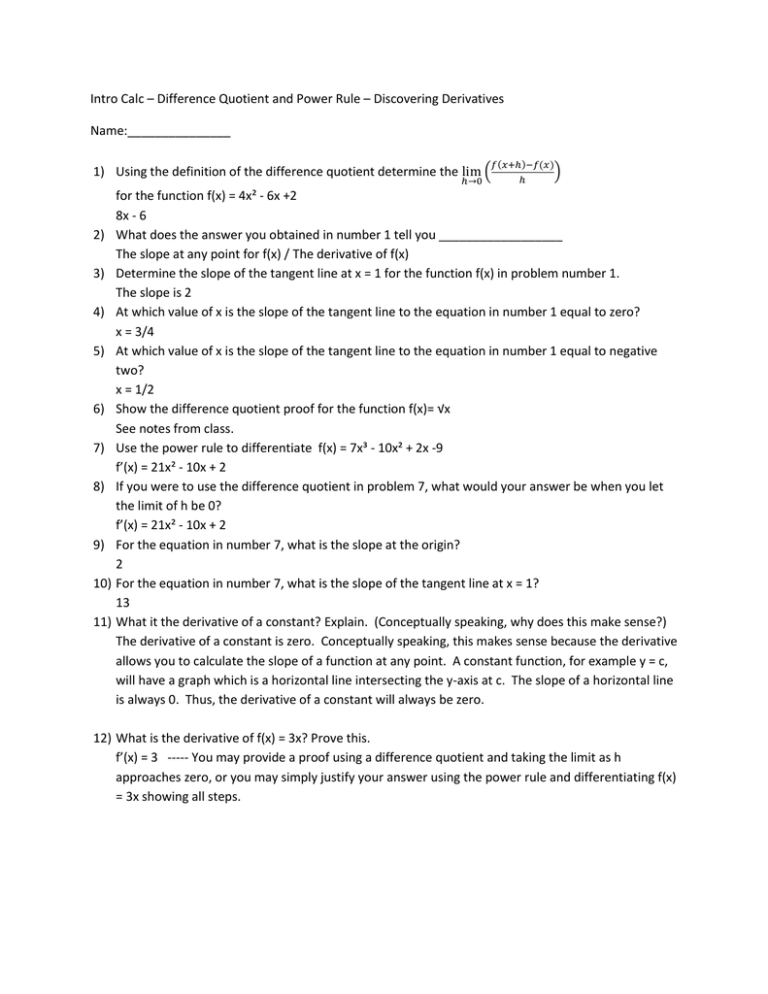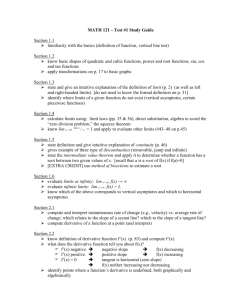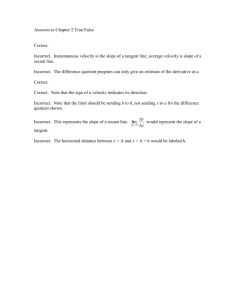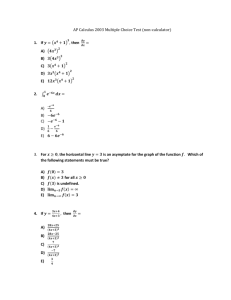Difference Quotient Practice with Solutions
advertisement

Intro Calc – Difference Quotient and Power Rule – Discovering Derivatives Name:_______________ 𝑓(𝑥+ℎ)−𝑓(𝑥) ) ℎ 1) Using the definition of the difference quotient determine the lim ( ℎ→0 2) 3) 4) 5) 6) 7) 8) 9) 10) 11) for the function f(x) = 4x² - 6x +2 8x - 6 What does the answer you obtained in number 1 tell you __________________ The slope at any point for f(x) / The derivative of f(x) Determine the slope of the tangent line at x = 1 for the function f(x) in problem number 1. The slope is 2 At which value of x is the slope of the tangent line to the equation in number 1 equal to zero? x = 3/4 At which value of x is the slope of the tangent line to the equation in number 1 equal to negative two? x = 1/2 Show the difference quotient proof for the function f(x)= √x See notes from class. Use the power rule to differentiate f(x) = 7x³ - 10x² + 2x -9 f’(x) = 21x² - 10x + 2 If you were to use the difference quotient in problem 7, what would your answer be when you let the limit of h be 0? f’(x) = 21x² - 10x + 2 For the equation in number 7, what is the slope at the origin? 2 For the equation in number 7, what is the slope of the tangent line at x = 1? 13 What it the derivative of a constant? Explain. (Conceptually speaking, why does this make sense?) The derivative of a constant is zero. Conceptually speaking, this makes sense because the derivative allows you to calculate the slope of a function at any point. A constant function, for example y = c, will have a graph which is a horizontal line intersecting the y-axis at c. The slope of a horizontal line is always 0. Thus, the derivative of a constant will always be zero. 12) What is the derivative of f(x) = 3x? Prove this. f’(x) = 3 ----- You may provide a proof using a difference quotient and taking the limit as h approaches zero, or you may simply justify your answer using the power rule and differentiating f(x) = 3x showing all steps.






